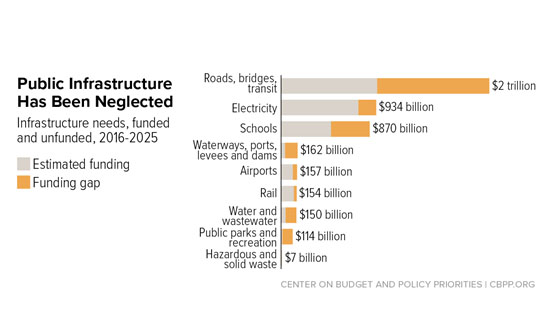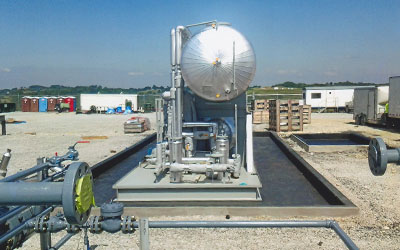
There is no doubt that our infrastructures have long been neglected. Cities, counties and states across the U.S. are grappling with how to fund these overdue projects. The bottom line; however, is that they must do something now. As populations increase, the infrastructures must keep pace to accommodate the expansion. Moreover, the repair, maintain and replacement of the old infrastructures must also be addressed.
In construction terms, “retrofitting” refers to replacing old infrastructures with materials and technology that was not available when the infrastructure was originally constructed. Polyurea is a product designed to solve a great number of infrastructure problems quickly. Polyurea’s flexibility lends itself to nearly every infrastructure issue. The following describe 10 infrastructures that are vital to the operations of our modern civilization and all of these areas are in great need of retrofitting.
Transit Networks
Infrastructure projects for roads, streets and highways often consist of resurfacing when replacement is not an option. This; however, is only a temporary fix. Street reconstruction, on the other hand, provides a long-term solution. Expansion projects roads and streets become necessary as a city grows. This may also include marine vessels and ports, subways, streetcar routes, parking lots and railways. As cities grow and expand, the logistics of getting people and products from one location to another becomes more complex and may mean that new transit networks need to be put in place to manage the traffic efficiently. Increased traffic means increased wear and tear. In 2019, 89 major transit projects are under construction in the U.S.
Bridges
It is estimated that 4% of our highway bridges are structurally deficient to maintain the level of traffic that they were designed to support. Most are in need of maintenance and repair.
Airports and Airways
When airports were constructed in the past, the technology and materials we have today were not available. As the old construction breaks down over time, these airports are now in need of an overhaul including the relaying of utility services and runways.
Marine Vessels and Seawalls
Marine transport is another way in which products are moved from one location to another. Marine vessels of all kinds must be watertight and resistance to corrosion. Seawalls are becoming more of a necessity as sea water encroachment erodes the beaches and destabilizes the soil. Erosion is claiming more useable land and threatening property. Traditional construction methods of seawalls relied on concrete and cement which degrade over time and develop leaks. Pier pillars are another concern as outdated structures begin to show degradation.
Water Supplies and Related Resources
Water is our most critical resource; therefore, it is vital to update water distribution services to keep them functioning at optimal levels. This includes improving drought resistance in certain areas of the country. Updating these infrastructures ensures proper water management and reducing or eliminating leaks as much as possible. We cannot afford to lose our freshwater resources.
Telecommunications
Our telecommunications systems allow our world to communicate. There are areas of the country where telecommunication systems are limited. Infrastructure projects seek to create more effective communication and ease communication congestion.
Power Generation and Transmission
Updating these infrastructures ensures that the storage and transmission of power can be done as efficiently as possible. Some states have moved utilities services underground, which will be a likely trend in other states.
Mining
Coal, minerals, salts and other underground resources must be mined. This means having an underground infrastructure that is safe and allows for work to be accomplished as safely and efficiently as possible.
Hazardous Waste Removal and Storage
Hazardous waste removal and storage entails ensuring that materials like harmful chemicals and nuclear waste are safely encapsulated.
Fixing Our Infrastructures with Polyurea

Oil and gas reboiler—Secondary Containment
Polyurea has long been used as a highly durable, long-lasting, seamless means of coating secondary containments; however, the applications for Polyurea are virtually endless and can be used as a solution within all categories of infrastructures. Polyurea can be spray-applied, rolled-on, injected and is fast-curing. It can be applied quickly to coat almost any structural configuration. This means far less disruption or down time compared to traditional methods and materials, especially where operations must be restored fast.
Polyurea’s unique characteristics make it resistant to wastewater system corrosion, saltwater and brine corrosion. Polyurea is impact resistant, resistant to most chemicals, can endure high traffic conditions, has a high heat temperature tolerance and is environmentally friendly. Polyurea can also be formulated for UV resistance. Polyurea can coat, seal, waterproof and enhance the structural integrity of the surfaces it is applied to. This makes it an idea product for commercial/industrial roofs, bridges, buildings, roadways, pipe systems, underground mining structures, marine vessels, cargo linings, fish holds, marina floors, ramps and stairs, sea walls, pier pillars and most any other man-made structures.
There are several different Polyurea formulations, as well as hybrid Polyureas, designed for specific applications. The beauty of Polyurea is that it can be custom formulated for almost any application. There is even a photoluminescent polyureas to enhance safety for stairs, walkways, parking lots, roads, airports and much more. Always consult with a professional Polyurea expert to understand which type of Polyurea is best for a specific project. Proper surface preparation is critical and will ensure a professional application.
Jay Davidson, Writer/Editor





